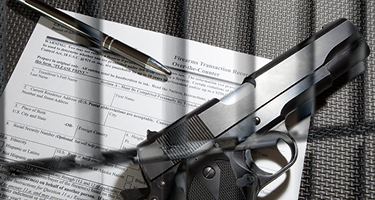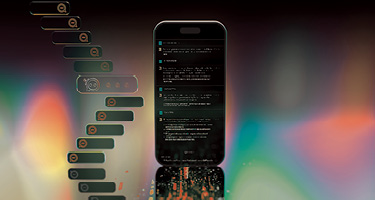What Evidence Do You Need for a Personal Injury Claim in Nova Scotia?
If you’ve been injured due to someone else’s negligence in Nova Scotia, you may be entitled to compensation, but securing it requires more than simply recounting what happened. Personal injury claims rely heavily on clear, well-organized evidence. Perhaps it was a car accident, a slip and fall, or something else entirely; either way, the strength of your documentation can play a major role in how your claim unfolds.
As stated in this article published by Preszler Injury Lawyers, evidence is central to building a compelling case. Below, we break down the most important types of evidence, how lawyers can help, and why acting quickly is critical.
When to Contact a Lawyer
Time is a major factor in personal injury claims. The sooner you speak to a lawyer, the better your chances of securing and preserving key evidence. In Nova Scotia, courts apply a legal principle known as the “discoverability” rule. This means your claim’s time limit doesn’t begin until you knew, or ought to have known, you had a cause of action. But waiting can still hurt your case if evidence disappears or becomes less credible.
For instance, in Hart v. Allstate (2023 NSSC 273), the court relied heavily on early police reports and DUI charges to establish a breach of duty. Had that documentation been delayed or lost, the outcome could have been different. A good lawyer will help ensure nothing is missed or left to chance.
Types of Personal Injury Claims in Nova Scotia
Not all personal injury claims are the same, and different cases may require unique types of evidence. Common examples include:
- Motor Vehicle Accidents: Car, truck, or motorcycle collisions caused by another driver’s negligence.
- Slip and Fall Incidents: Injuries resulting from unsafe conditions on someone else's property.
- Medical Malpractice: Negligent care or misdiagnosis by a healthcare provider.
- Product Liability: Injuries caused by defective or dangerous consumer products.
- Workplace Injuries: Injuries suffered on the job, especially where third-party negligence is involved.
Each type of case will require tailored evidence, but the overall goal remains the same: to prove liability, causation, and damages.
Core Evidence That Strengthens a Personal Injury Claim
1. Medical Records
Medical evidence is often the foundation of a claim. This includes diagnosis reports, treatment plans, prescriptions, hospital records, physiotherapy notes, and receipts for medication or specialist visits.
Nova Scotia has specific rules around injury assessment. For example, in whiplash and sprain cases, insurers and courts rely on standardized diagnostic protocols to determine the severity and legitimacy of soft tissue injuries. These are outlined under the Automobile Accident Minor Injury Regulations, and failing to meet these standards can limit your compensation.
2. Photographic and Video Evidence
Photos and videos captured at the scene can be powerful. They offer a visual account of the accident environment, damage to vehicles or property, and the immediate aftermath of the injury. If you’re able to do so safely, take photos from multiple angles and note the time and location. Videos showing hazards like wet floors, broken railings, or poor lighting can also be persuasive.
3. Physical Evidence
Sometimes, physical items tell a story. This might include torn clothing, broken personal items, bloodied safety gear, or damaged footwear. In vehicle accidents, debris, vehicle parts, and skid marks may help reconstruct what happened. Preserving these objects in their original state is important, as tampering or disposal may weaken their evidentiary value.
4. Witness Statements and Police Reports
Independent witnesses can help verify your version of events. It may be someone who saw the accident happen or a bystander who observed your injuries afterwards. Either way, their accounts can support your case.
In vehicle collisions, police reports are particularly critical. Officers may record who appeared to be at fault, issue traffic citations, and collect breathalyzer data. As touched upon above, in Hart v. Allstate (2023 NSSC 273), DUI charges and accompanying police statements were essential in demonstrating that the driver breached their duty of care.
5. Employment and Financial Records
Compensation can entitle you to recover lost wages, out-of-pocket expenses, and reduced earning potential. To do this, you’ll need financial documentation such as:
- Recent pay stubs or salary slips
- Tax returns or T4s
- Records of sick leave or disability leave
- Invoices for expenses related to treatment or mobility aids
The more you can show how the injury disrupted your ability to work or function day-to-day, the stronger your claim.
How to Prove a Personal Injury Claim
Every personal injury case revolves around accountability. To hold someone legally responsible for your injuries, you must prove that they failed to meet an expected standard of care, that their actions caused harm, and that the resulting damages are real and measurable.
Breach of Duty
A breach of duty occurs when someone fails to act with the level of caution or responsibility required by the situation. This might involve a store owner neglecting maintenance that could have prevented an accident, or a company allowing unsafe practices to continue without correction. Proving a breach means demonstrating what steps a reasonable person or business should have taken under the circumstances and how they failed to meet that expectation.
Causation and Damages
Establishing causation requires showing a direct link between the negligent act and the injury sustained. For example, untreated ice outside a building entrance may lead to a fall that causes a significant injury, or a failure to diagnose a medical condition may allow that condition to worsen unnecessarily. Along with causation, claimants must also prove damages, including physical injuries, emotional distress, financial loss, and any future impacts on quality of life.
The Role of Expert Testimony
In many cases, expert witnesses are essential to translating technical details into clear, persuasive evidence. A structural engineer might explain how a building defect contributed to an accident. A medical specialist could outline the long-term effects of an injury. An occupational expert may assess how an injury affects a person’s ability to work. Expert testimony strengthens a claim by providing professional, unbiased analysis that supports the evidence presented.
How a Lawyer Can Help Strengthen Your Claim
Navigating a personal injury claim is complex, especially while you’re recovering from an injury. A personal injury lawyer helps by:
- Securing and organizing evidence: This includes requesting official records, locating video footage, interviewing witnesses, and preserving physical items.
- Consulting expert witnesses: In more serious cases, lawyers may bring in medical, economic, or accident reconstruction experts to clarify fault and calculate long-term damages.
- Negotiating with insurers: Insurance companies are trained to reduce payouts. A lawyer knows how to present evidence strategically to support full compensation.
- Litigating if necessary: If the insurer won’t agree to a fair settlement, your lawyer can file a lawsuit and present your case in court.
Lawyers also understand the legal standards for proving negligence, such as demonstrating that the other party owed you a duty of care, breached it, and caused measurable harm as a result. This legal framing is what ultimately leads to success in court or in settlement talks.
Start Moving Forward with Preszler Injury Lawyers: Book Your Free Consultation Today
If you’ve been injured due to someone else’s actions, gathering the right evidence is essential. Medical records, photos, witness statements, and financial documentation all contribute to building a strong case. In Nova Scotia, even minor injuries like whiplash may need to be assessed under specific legal protocols, and failing to follow them could reduce your compensation.
You don’t have to handle it alone. A personal injury lawyer can guide you through each step, help you avoid mistakes, and give you the best chance of securing the compensation you deserve.
To learn more about your legal options, visit Preszler Injury Lawyers.
The statistics and facts in this article are based on available data as of the publication date. While efforts have been made to ensure accuracy, details can change over time. This content is therefore for informational purposes only and should not be used as professional advice.
















